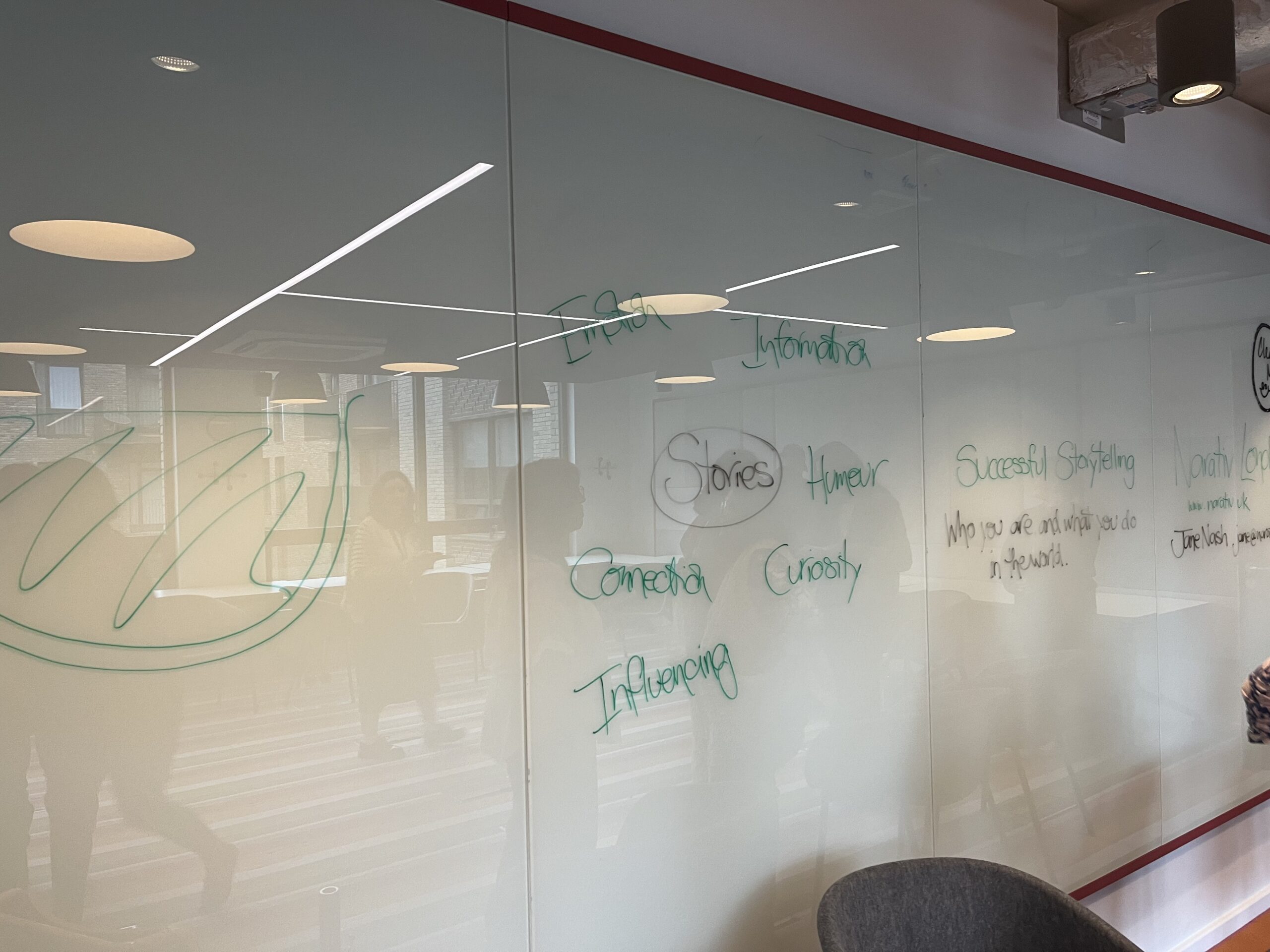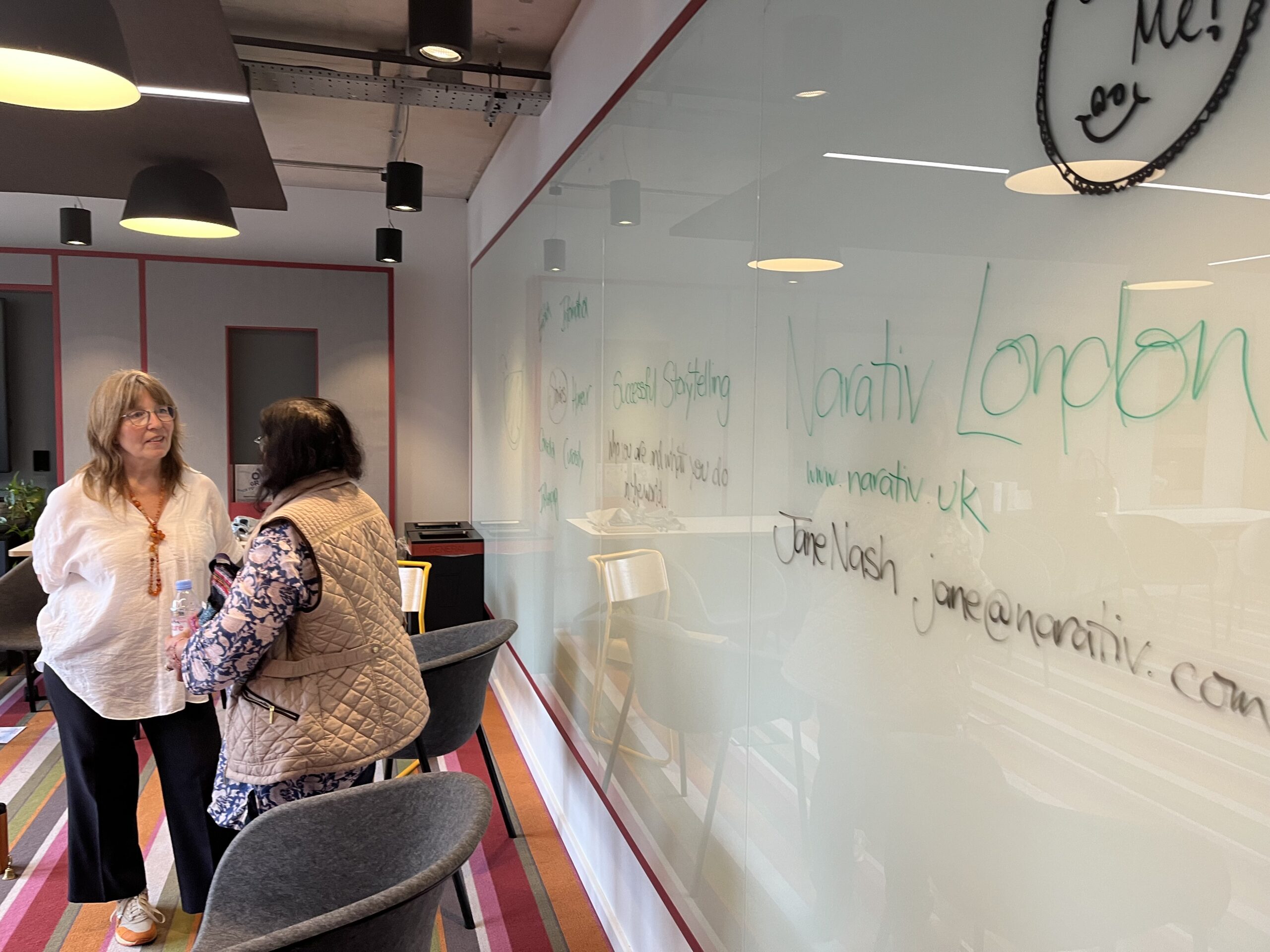Valuable Insights
Without listening there can be no storytelling. Jane illustrated this concept by asking us to imagine listening as a bowl and telling as the liquid that fills it. Just as the bowl gives the liquid its shape, so does our listening gives the telling its shape.
To be a successful storyteller, one must also be an excellent listener. This requires mastering active and open listening techniques. Obstacles can arise that prevent us from listening effectively, such as physical discomfort, being distracted by thoughts, judgments, and opinions. To become a better listener, we must overcome these barriers and create a clear, open-minded listening, allowing the storyteller to share their narrative without fear of judgement. When people experience such non-judgmental listening, they are empowered to express their true selves.
At the workshop, we practised a short mindfulness exercise to help activate open listening. We closed our eyes, relaxed, and focused on our sensations and sounds around us, both immediate and distant. This exercise not only helped us relax but also trained our minds to direct attention deliberately.
We listen to understand, gain information, and learn. Good listening helps us become better storytellers, as our brain waves synchronise with those of the storyteller. It is crucial to allow them to express themselves freely, without interruption. This involves maintaining eye contact, responding with appropriate facial expressions, and asking thoughtful questions, rather than simply waiting for your turn to speak.
After preparing the environment for open listening, we engaged in a practical warm-up exercise, sharing a one-minute story about our weekend. We were instructed to focus on describing specific actions rather than using vague generalisations. The emphasis was on narrating events as they happened, rather than offering opinions, interpretations, or commentary.
To achieve this, we applied the ‘show, don’t tell’ principle. We imagined storytelling as a camera capturing all five senses, aiming to describe what we heard, saw, tasted, smelled, and touched to create a vivid and experiential picture. We practised this technique with our partners. Everyone quickly realised that telling an engaging story in just a minute is incredibly challenging.
Following the exercise, we had a discussion session to reflect on the power of storytelling. We identified that stories serve multiple purposes: they help us express ourselves, share information, communicate ideas, inspire, connect with others, and influence perspectives.
Jane then introduced the main focus of the workshop: using personal stories to better convey who we are and what we do in the world. She reviewed the websites of businesses represented by the workshop participants and discussed how buzzwords like ‘innovative,’ ‘cutting-edge,’ ‘disruptive,’ or ‘holistic’ often fail to differentiate businesses. These abstract concepts require emotional resonance to be effective, which is best unlocked through personal storytelling.
To illustrate this, Jane shared a compelling three-minute story showcasing the value of her work. She skilfully set the scene, engaging our senses, and introduced us to a relatable protagonist who started the workshop as a sceptic and eventually opened up.
We then practised sharing our personal work stories in pairs. My partner, a young architect, recounted her first assignment, where she transformed a cold, damp basement into a cosy living space. She vividly described the end result and the challenges she overcame during the project. The exercise highlighted the abundance of stories we each have to tell and their ability to illustrate the purpose of our work.
At the conclusion of the workshop, Jane thanked us for our participation and encouraged us to seek out stories in our everyday lives, while also reflecting on the way we tell them.











